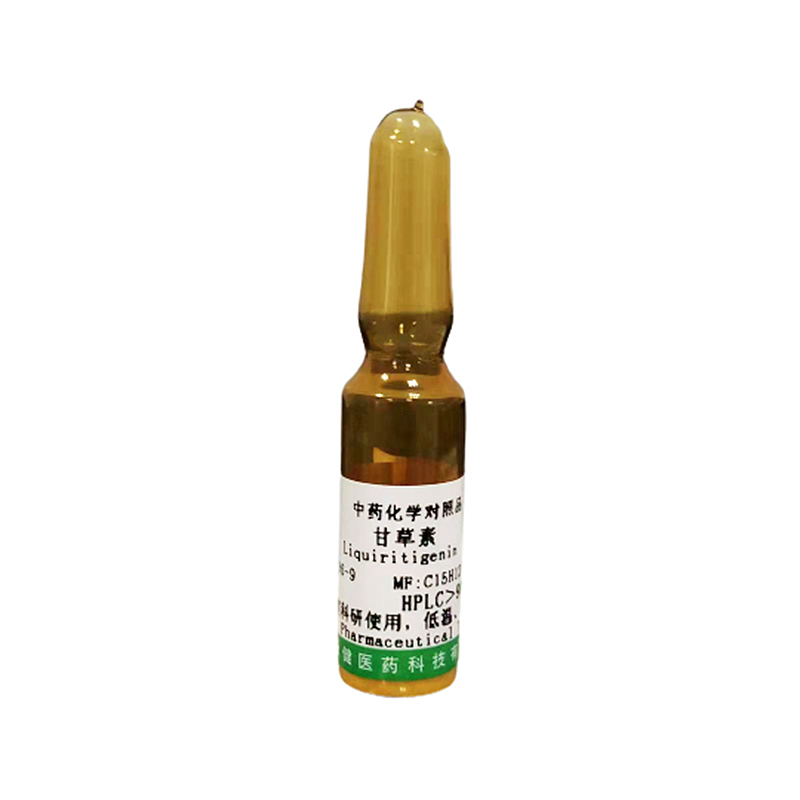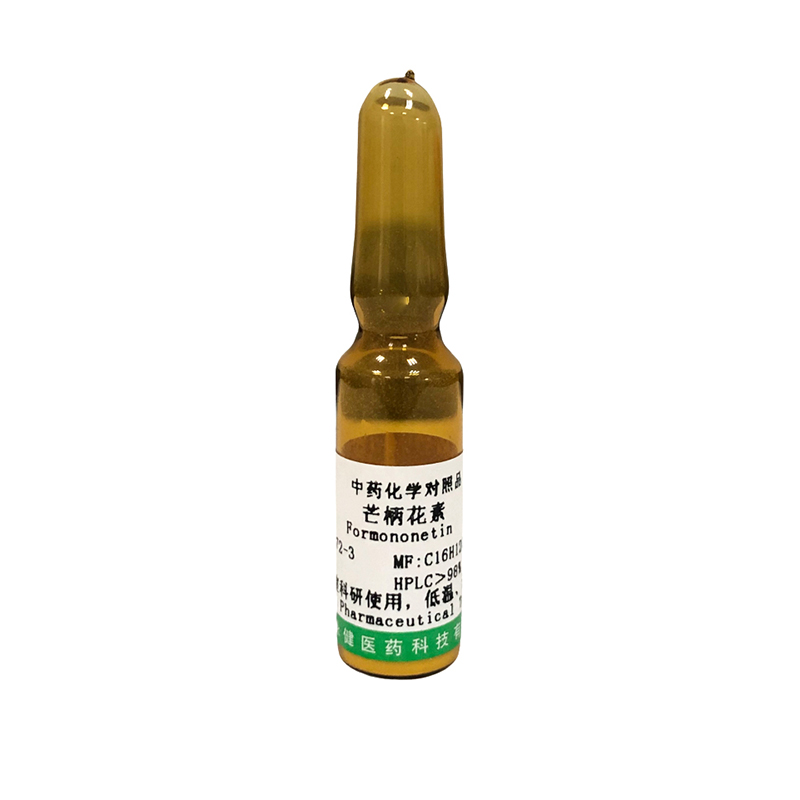Liquiritigenin / Glycyrrhizin Cas No. 41680-09-5
Essential Information
[product name] Liquiritigenin
[molecular weight] 256.25338
[CAS No.] 578-86-9
[chemical classification] flavones dihydroflavones
[source] Glycyrrhiza uralensis Fisch
[purity] > 98%, detection method HPLC
[properties] yellow powder
[pharmacological action] antispasmodic, anti ulcer, antibacterial, hepatocyte monoamine oxidase inhibitor
Source and Existence
Glycyrrhizin mainly exists in the roots and stems of Glycyrrhiza uralensis. The content of eicosin in domestic Glycyrrhiza uralensis with skin is about 7 ~ 10%, and that in peeled Glycyrrhiza uralensis is about 5 ~ 9%. After drying licorice, it is extracted with ammonia, then concentrated in vacuum, precipitated with sulfuric acid, and finally crystallized with 95% alcohol (so it is also called ammonium glycyrrhizinate). It can also be extracted and processed into glycyrrhizic acid and then used. The method is to collect the coarse and broken roots of Glycyrrhiza and extract them with water at 60 ℃. The obtained water extract is mixed with sulfuric acid to form glycyrrhizic acid precipitation, and then adjust the pH of the precipitation to about 6 with alkali to form glycyrrhizic acid solution.
Character
Glycyrrhizin is a white crystalline powder. Similar to dioxzarone, its sweet stimulation is slower than sucrose, goes slower, and the duration of sweetness is longer. When a small amount of glycyrrhizin is shared with sucrose, 20% less sucrose can be used, while the sweetness remains unchanged. Glycyrrhizin itself does not contain aroma substances, but has the effect of enhancing aroma. The sweetness of glycyrrhizin is 200 ~ 500 times that of sucrose, but it has a special flavor. It is not used to the feeling of continuous unhappiness, but it works well with sucrose and saccharin. If an appropriate amount of citric acid is added, the sweetness is better. Because it is not a nutrient of microorganisms, it is not as easy to cause fermentation as sugars. Replacing sugar with glycyrrhizin in pickled products can avoid the phenomena of fermentation, discoloration and hardening.
Security
Licorice is a traditional condiment and traditional Chinese medicine in China. As an antidote and condiment since ancient times, licorice has not been found to be harmful to human body. Its normal use amount is safe.
Application
Licorice powder is often used as a seasoning agent to endow food with sweetness and unique flavor, such as licorice, olive, galangal and other spice dried fruits. Licorice extract can be used for canning and spice. The hygienic standard for the use of food additives in China (GB 2760) stipulates that the use scope of licorice is canned, seasoning, candy, biscuits and Minqian (Cantonese cold fruit), and the use amount is not limited.
Glycyrrhizin is a low calorie sweetener. Its sweetness is different from sucrose, that is, glycyrrhizin's sweet stimulation reaction is later, and sucrose is earlier. The time of glycyrrhizin producing sweet stimulation is roughly the same as that of table salt. Therefore, when glycyrrhizin and table salt are used together, it can buffer the saltiness of foods with high salt content, so that the taste will not be too salty, and produce a round and soft ambiguity. Therefore, glycyrrhizin is suitable for the seasoning of pickled foods. If glycyrrhizin is combined with table salt and monosodium glutamate, it can not only improve the seasoning effect, but also save the amount of monosodium glutamate. Glycyrrhizin and saccharin are mixed in the ratio of 3 ~ 4 ∶ 1, and then combined with sucrose and sodium citrate for food, the sweetness effect is better.
Glycyrrhizin has strong masking property and can mask the bitterness in food. For example, its masking effect on caffeine is 40 times that of sucrose. It can reduce the bitterness in coffee.
Licorice also has a certain emulsifying function in water. When mixed with sucrose and protein, it can form a fine and stable foam. It is suitable for making soft drinks, sweets, cakes and beer. Glycyrrhizin is insoluble in fat, so when it is used in fat (such as cream and chocolate), some measures should be taken to disperse it evenly. Glycyrrhizin also has a strong aroma enhancing effect. It has a good effect when applied to dairy products, chocolate, egg products and beverages.









